
views
What is the Darkness spell in D&D 5e?
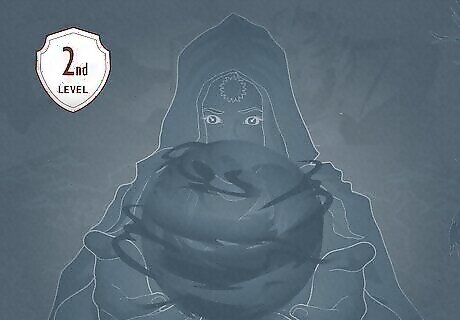
Darkness is a 2nd-level evocation spell that creates magical darkness. The Darkness spell creates a 15-foot-radius sphere of magical darkness centered on any point of choice within range. When you cast Darkness, it completely obscures the 15-foot radius area, going around corners and blocking out nonmagical light. Casting time: 1 action Range: 60 feet Target: A point within range Components: Verbal and material (bat fur and a drop of pitch or piece of coal) Duration: Concentration, up to 10 minutes
How does Darkness work?
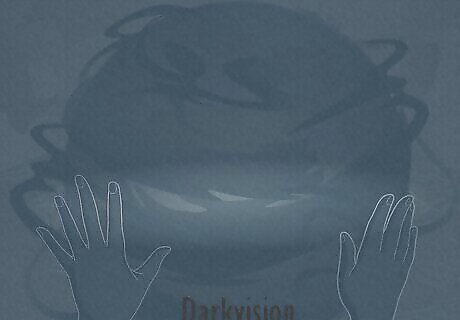
Darkvision doesn’t work inside a Darkness spell. Darkvision is a sensory ability in 5e that allows creatures to see in darkness as if it were dim light. Many non-human playable races (like tieflings, elves, and dwarves) naturally have darkvision. However, any creature inside the area of a Darkness spell can’t see at all, even if they have darkvision normally. The Darkness spell can also dispel magical light from spells that are 2nd-level or lower. However, magical light from a spell of 3rd level or higher can illuminate the area within a Darkness spell.
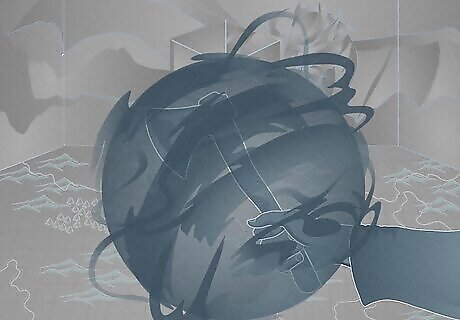
The spell’s magical darkness can be centered on an object. When casting Darkness, you can choose any point within range—including an object your PC (player character) is holding or something that isn’t worn or carried. If cast on an object, the magical darkness moves with it and radiates from that object. Keep in mind that covering up the source of a Darkness spell with something opaque (like a bowl or a shield) blocks the magical darkness.
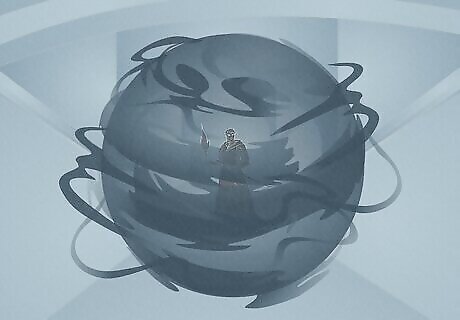
Magical darkness blocks incoming light. When cast in an area with light, Darkness makes it impossible for creatures on one side of the magical darkness to see light on the other side of the darkened area. For example, if your PC were standing on one side of a narrow tunnel with a torch on the other and a Darkness spell in the middle, they wouldn’t be able to see the torch. However, in an open area, your PC would be able to see light coming in from either side of the Darkness spell—just not through it.

Creatures inside magical darkness are effectively blinded. Because Darkness creates a heavily obscured area, blocking all vision, the “blinded” condition technically applies to creatures within the spell’s area. Blinded creatures can’t see and automatically fail ability checks that require sight. Attack rolls against them have advantage, and their attack rolls have disadvantage. Therefore, if your PC is inside the range of a Darkness spell, they’d have to rely on their other senses (like hearing) to sense where an enemy is. However, if the enemy your PC is targeting also can’t see them, you’d technically get advantage on an attack against them (because of 5e’s unseen attacker rules). So, Darkness actually nullifies advantage and disadvantage so long as both your PC and their target can’t see one another, meaning you’d just make a straight attack roll against an enemy. Keep in mind that many spells might be impossible to cast while inside Darkness since they often require you to be able to see your target.
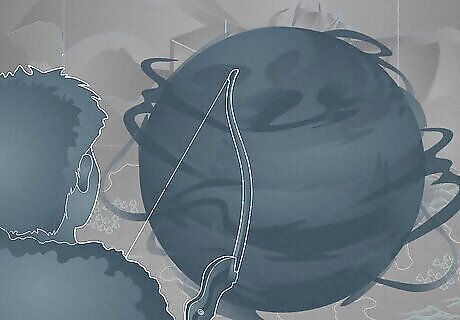
Creatures outside of magical darkness can’t see inside the sphere. Although creatures outside the range of a Darkness spell aren’t blinded, they still can’t see any creatures (or anything else) inside the magical darkness. So, if your PC were standing outside a sphere of magical darkness and tried to target an enemy inside it, they’d have to attack without being able to see that enemy. Advantage and disadvantage on attack rolls are also nullified in this scenario. That’s because your PC would technically have disadvantage on an attack against an enemy they can’t see and advantage because the enemy can’t see them. Thus, in that situation, the disadvantage and advantage cancel one another out, meaning you’d just make a straight attack roll.
How to Use the Darkness Spell
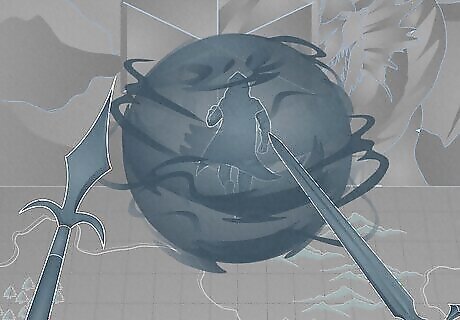
Escape from opportunity attacks. Attacks of opportunity are reactions; an enemy can make an attack of opportunity against your PC if you try to get away from them and move outside their melee range. However, they can only be made against visible targets—so if you need to get away without triggering an opportunity attack, cast Darkness before fleeing outside the enemy’s range. In fact, Darkness is a useful “escape” spell in general. You can use it to make enemies lose track of where you (or your entire party) went and escape an area unseen.

Dispel magical light. Since Darkness nullifies magical light from a spell of 2nd level or lower, it can get rid of debuffs from spells like Faerie Fire. If you need to extinguish magical light quickly (particularly in a fight), quickly cast a Darkness spell. You can also use it to dispel nonmagical light; for example, you could set up an ambush against a group of bandits by casting Darkness around their campfire. You can also block out sunlight with the Darkness spell. If one or more party members have the Sunlight Sensitivity feature (like a drow elf or kobold), this might help them. To block out sunlight, simply cast Darkness on an object you can hold above your head (like the tip of a spear).

Stop enemy spellcasters from targeting you. Since many spells require the caster to have a direct line of sight on their target, casting Darkness on an enemy spellcaster can stop them from targeting your PC (or an ally) with damaging spells. This strategy is especially helpful when you don’t want to be Counterspelled. Run into magical darkness (or hide behind it), and enemy spellcasters won’t be able to counter you. However, concentration spells like Eyebite or Hold Person will continue even if the caster can’t see you because the spell has already taken hold. Want to cast Darkness at a point more than 60 feet away? Try casting darkness on a projectile (like an arrow or bolt) and shooting it the rest of the distance.
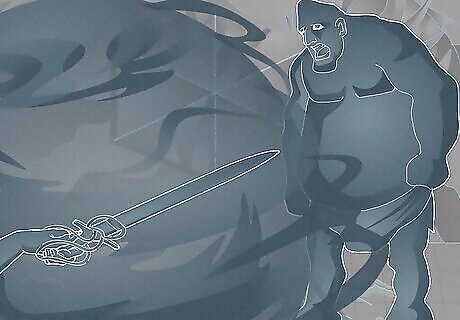
Pair it with the Hide action to become an unseen attacker. In 5e, being an “unseen attacker” simply means you get advantage on an attack roll since your target can’t see you coming, rolling your d20 twice and taking the higher result. If your PC is a rogue, use the Hide action inside Darkness to give yourself advantage on attacks—and use your Sneak Attack ability. Sneak attack is a rogue ability that lets you apply extra damage to an attack. It’s a vital ability for rogues—and Darkness can give you a chance to Sneak Attack every round.
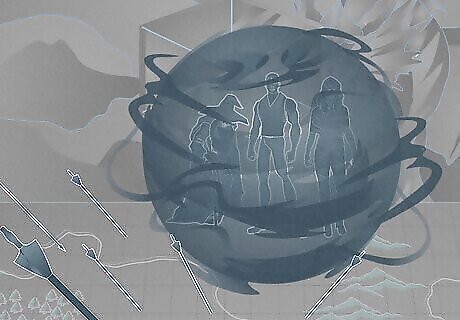
Control the battlefield and force enemies to re-position themselves. Darkness can be a frustrating spell to work around—it can disrupt attacks, block light, and render creatures unable to see, after all. That’s why casting it is a surprisingly effective way to rearrange the battlefield, forcing enemies to change what they’re doing and scatter. For example, if a group of archers up on a wall were firing at the party, you could use Darkness to force them to leave their perch and move in closer in order to get a clear shot. When you’re considering casting Darkness, ask yourself how it might affect a battlefield. What do you need your enemies to do? Where can you position your Darkness spell to make that happen?
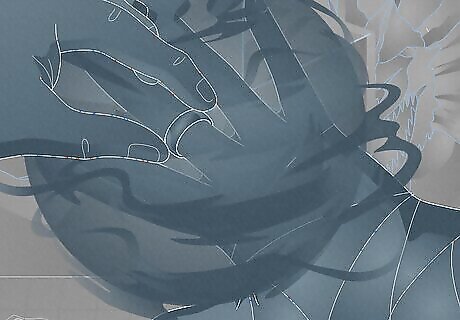
Cast Darkness on an object you can store easily. Darkness is a great spell, but its uses tend to be situational. So, if you want to have Darkness handy but don’t want to expose yourself to it for an entire fight, try casting Darkness on an object that’s easy to store in a pocket or sheath (like a dagger or a wearable ring). That way, it’s easy to slip on the ring when you want to turn the darkness spell on and put it away when you want to turn the spell off.
How does nonmagical darkness work?

Nonmagical darkness creates heavily obscured areas in D&D 5e. The Darkness spell explicitly creates magical darkness; nonmagical darkness works similarly but doesn’t block natural or magical light. Darkvision works in areas filled with nonmagical darkness—and although it creates obscured areas, nonmagical darkness is easy to dispel with anything from a Dancing Lights cantrip to fire light from a torch. For example, characters outdoors at night (even under the light of the moon) would be considered shrouded in nonmagical darkness. Similarly, an unlit, windowless dungeon would be considered an area filled with nonmagical darkness.
How to Overcome Magical Darkness
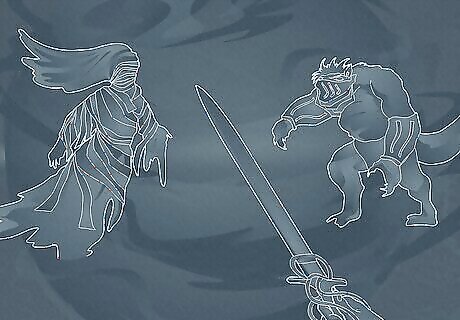
Use blindsight and other features to overcome magical darkness. Blindsight allows creatures to perceive their surroundings even when their vision is obscured. With blindsight, the Darkness spell will have no effect on your PC. Rogues naturally get the Blindsense ability, while fighters, paladins, and rangers can choose to learn the Blind Fighting style to gain blindsight. Other ways to overcome the Darkness spell include: Devil’s Sight. This is an Eldritch Invocation that allows warlocks to see through magical darkness. Truesight. Truesight is a sensory ability that allows creatures to see in normal and magical darkness, detect invisible creatures and illusions, and perceive the original form of shapeshifters. Magical items. Certain magical items can dispel Darkness, including a Sun Blade (which sheds radiant, magical light). This is because magical items that give off light aren’t spells of 2nd level or lower—so Darkness can’t affect them. Shapeshifting. Druids can navigate Darkness by shapeshifting into a form with blindsight—such as a spider, snake, bat, or scorpion. Familiars. While wizards might not be able to see in a Darkness spell, they can direct their familiar (summoned through a Find Familiar spell) to find the enemy they’re trying to target and cast a spell through their familiar instead.
Which classes can cast Darkness?
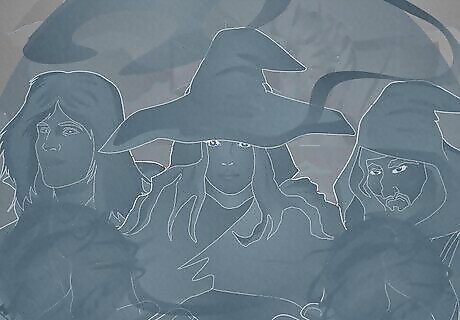
Sorcerers, warlocks, and wizards can cast Darkness. Darkness is automatically listed on the sorcerer, warlock, and wizard spell lists for 5e, so any PC with one of those classes can learn it (regardless of their subclass). However, other subclasses—and even playable races—can also cast Darkness, including: Night Domain clerics Oathbreaker paladins Circle of the Land (Swamp) druids Drow elves


















Comments
0 comment